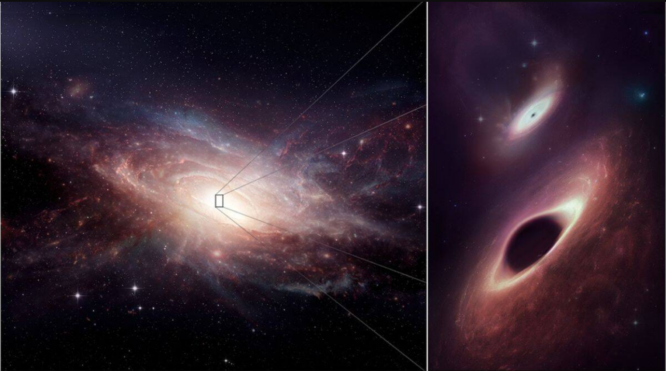Supermassive black holes with masses millions or billions of times higher than that of our Sun occur at the center of galaxies, including our Milky Way. They feed on gas that falls on them, but how they obtain gas near enough is unknown.
A new study, led by researchers from Newcastle University, has found that dusty supermassive black holes are more likely to grow and release tremendous amounts of energy when they are inside galaxies that are on a collision course with a neighbouring galaxy. Infrared light from heated particles around black holes revealed their growth.

This study uses NASA/ESA Hubble Space Telescope, Spitzer Space Telescope, and other observatory data.
The researchers developed a novel method to estimate the likelihood of two galaxies colliding. They used this new method to analyze a large number of distant galaxies that formed between 2 and 6 billion years after the Big Bang to better understand “cosmic noon,” when most of the universe’s galaxy and black hole growth is expected to have occurred.
“Our novel approach looks at hundreds of thousands of distant galaxies with a statistical approach and asks how likely any two galaxies are to be close together and so likely to be on a collision course,” said Sean Dougherty, postgraduate student at Newcastle University and lead author of the paper.
The James Webb Space Telescope (JWST) will help astronomers locate more concealed developing black holes. Webb’s capacity to see deeper into space than ever before will tell more about how dusty black holes develop.
JWST will find more, including the hardest to find. “From there, we can do more to understand the dust that surrounds them, and find out how many are hidden in distant galaxies,” said Dr. Chris Harrison, a researcher at Newcastle University’s School of Mathematics, Statistics, and Physics and co-author of the paper.

